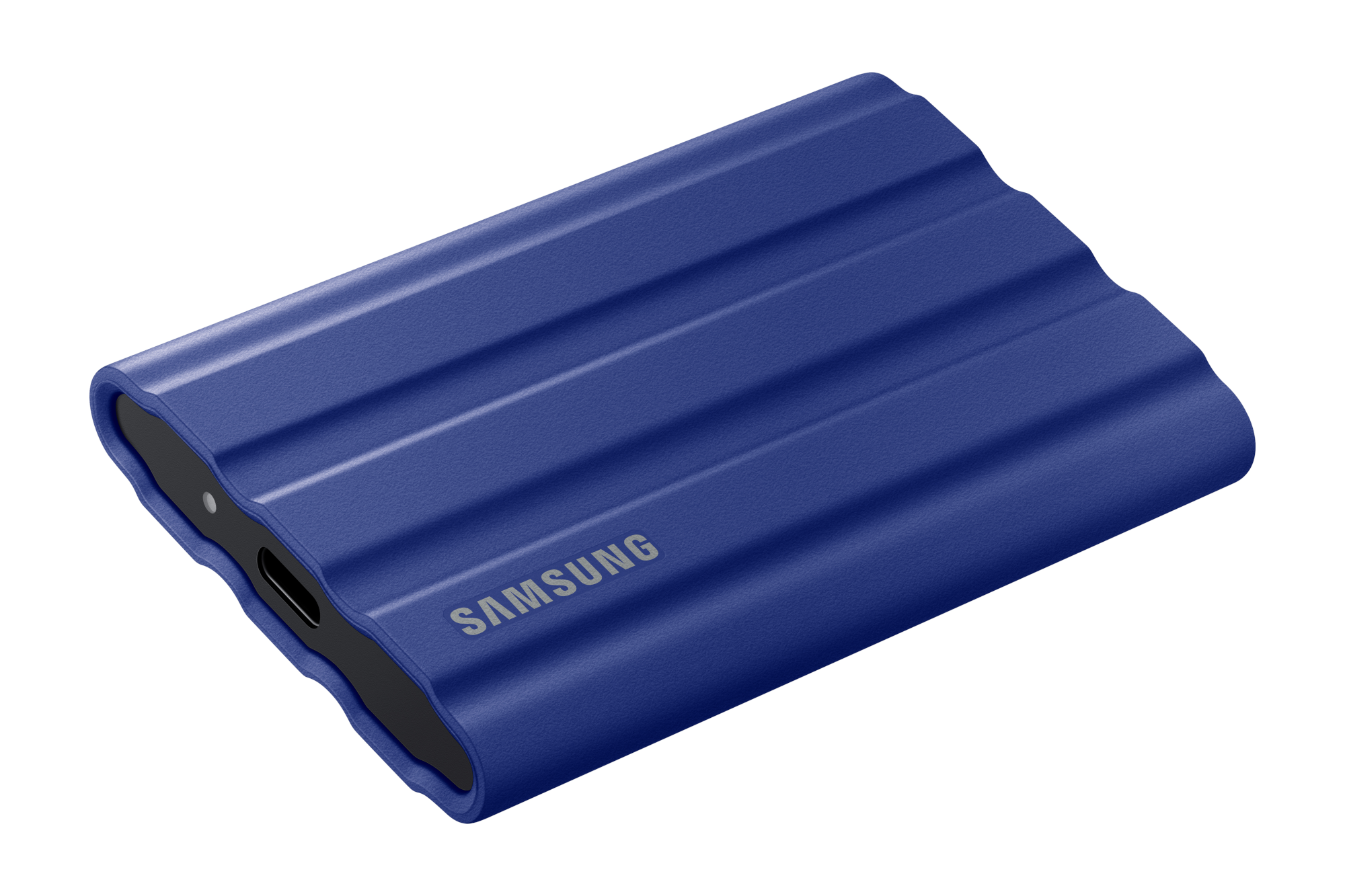 At a glance
At a glanceExpert's Rating
Pros
- Both 10Gbps and Thunderbolt 3/4 connectivity
- Fast, especially over Thunderbolt
- IP68 weather and dust resistant
Cons
- Pricey
Our Verdict
For the user who wants the option of speedy 40Gbps performance, the Pro-G40 is the best dual-bus drive that we’ve tested. But that flexibility will cost you. As a USB 3.2 10Gbps, the Pro-G40 is good, but not noticeably better than the best-performing drives in that class.
Best Prices Today: SanDisk Pro-G40 SSD
It’s nice to have choices, and the Pro-G40 external SSD provides a very useful one: Thunderbolt 3/4 or 10Gbps USB. Yup, you can connect this drive to either bus depending on need: optimal speed, or minimal power consumption.
Further reading: See our roundup of the best external drives to learn about competing products.
SanDisk Pro-G40 design, features, and price
Though the highlight of the Pro-G40 is its dual-bus (10Gbps USB/40Gbps Thunderbolt 3) compatibility, it’s also extremely rugged and weather-toughened. The Pro-G40’s IP68 rating (no dust intrusion, and no water intrusion up to 1 meter) is nothing to scoff at. Given the exposed (no plug or cover) Type-C connector, it’s no mean trick either.
The other thing about the Pro-G40 is that, it’s, err… expensive. The 1TB model retails for $160, the 2TB for $200, and the 4TB for $400. By way of comparison, the 2TB Samsung T7 Shield is a mere $140.
Our favorite USB 3.2 performance drive
The high price means you should only consider the Pro-G40 if you want Thunderbolt. Thunderbolt storage is always expensive, so don’t take this as a knock on the Pro-G40—there are more expensive Thunderbolt drives.
As for the technology inside, to achieve the throughput Thunderbolt can deliver NVMe is required. Indeed, AS SSD enumerated the internal drive as a Western Digital (the parent company) SN750E—an NVMe drive. What bridge or combo chip is in use internally, SanDisk didn’t say.
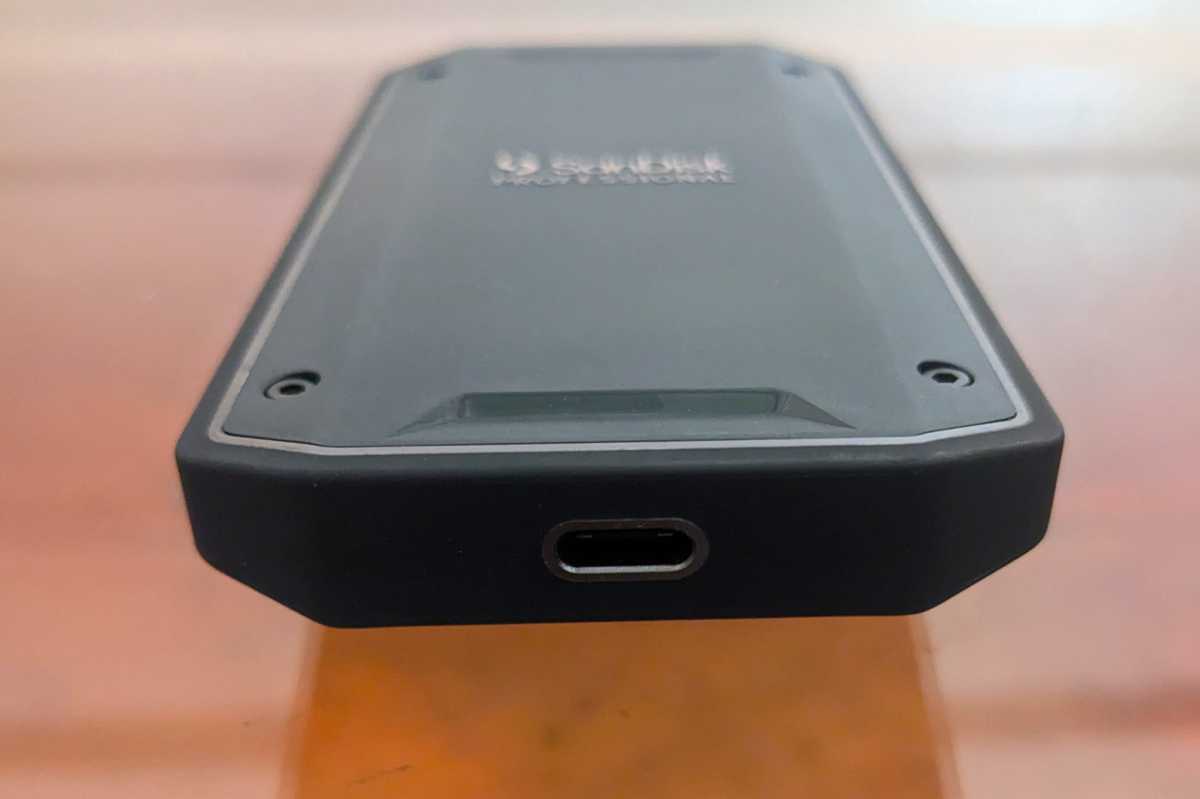
A note on Thunderbolt 3 versus Thunderbolt 4—both are the same speed (40Gbps) and basic technology, with slightly different specs in terms of what they should support before they can use the logo. Version 4 was basically implemented to force vendors to implement the entirety of the spec, which includes tunneling USB/DisplayPort/HDMI, etc., to be certified. Many early implementations were less than complete.
If you’re buying a Windows PC and want to make sure you have all of Thunderbolt’s features, look for the Thunderbolt 4 logo. Macs have always featured a complete implementation. For drives, including the SanDisk Pro-G40 or OWC’s Envoy series, Thunderbolt 3 is all you need as they function only as storage.
How does the SanDisk Pro-G40 perform?
Though the Pro-G40 is a decent performer over the 10Gbps USB bus, it’s obviously going to be an even better one using 40Gbps Thunderbolt. The gold bars below offer plenty proof of that.
However, before the obvious speed advantage seduces you, I should tell you that I’ve backed off pure Thunderbolt drives for everyday use, opting instead for USB 10Gbps and 20Gbps. Why’s that, you ask? It’s generally fast enough, uses less power, and produces less heat.
It’s not really Thunderbolt’s fault—it’s merely that the faster transfers use more juice, which in turn makes things hotter. Of course, when I have a really big transfer operation, I switch to Thunderbolt—I’m not crazy!
The Pro-G40 is a very good performer—it gives you top speed when you need it and daintier power consumption and less heat when USB will do.
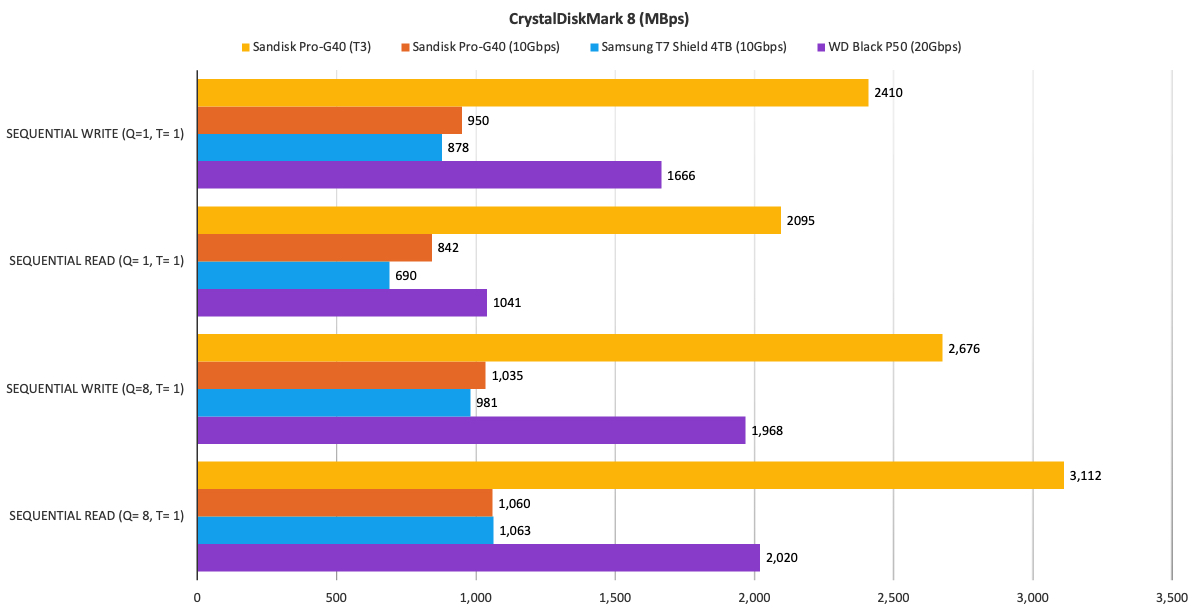
As you can see above, the Pro-G40 really goes to town on Thunderbolt, and is quite good as a 10Gbps USB drive as well. Note that the WD Black P50 is a Superspeed 20Gbps drive, not 10Gbps like the Pro-G40 and Samsung T7 Shield. It’s merely there to show the differences between 10Gbps, 20Gbps, and 40Gbps.
In order to keep the charts readable, I left out the other combo USB/T3 drive I’ve tested for Macworld—the OWC Envoy Pro FX. The Envoy Pro FX is a worthy product, but performs a hair slower than the Pro-G40 over Thunderbolt, and for some reason, was a slow reader over 10Gbps USB.
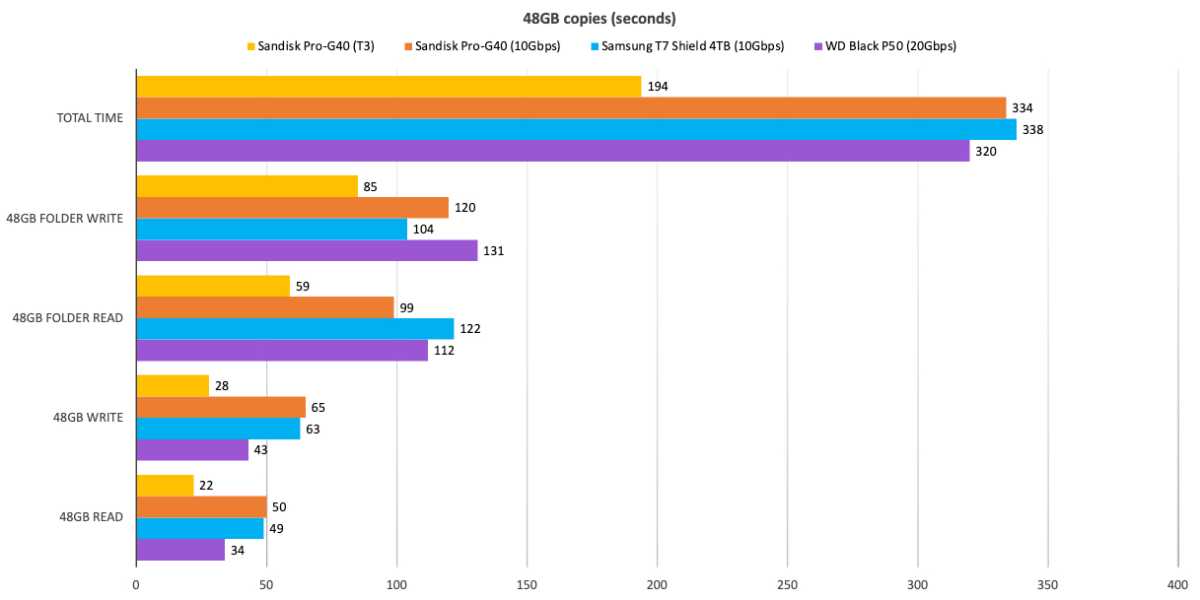
The 48GB transfers shown above were very close between the Pro-G40 and the T7 Shield, with the Pro-G40 taking a slight victory by virtue of a very fast folder read time.
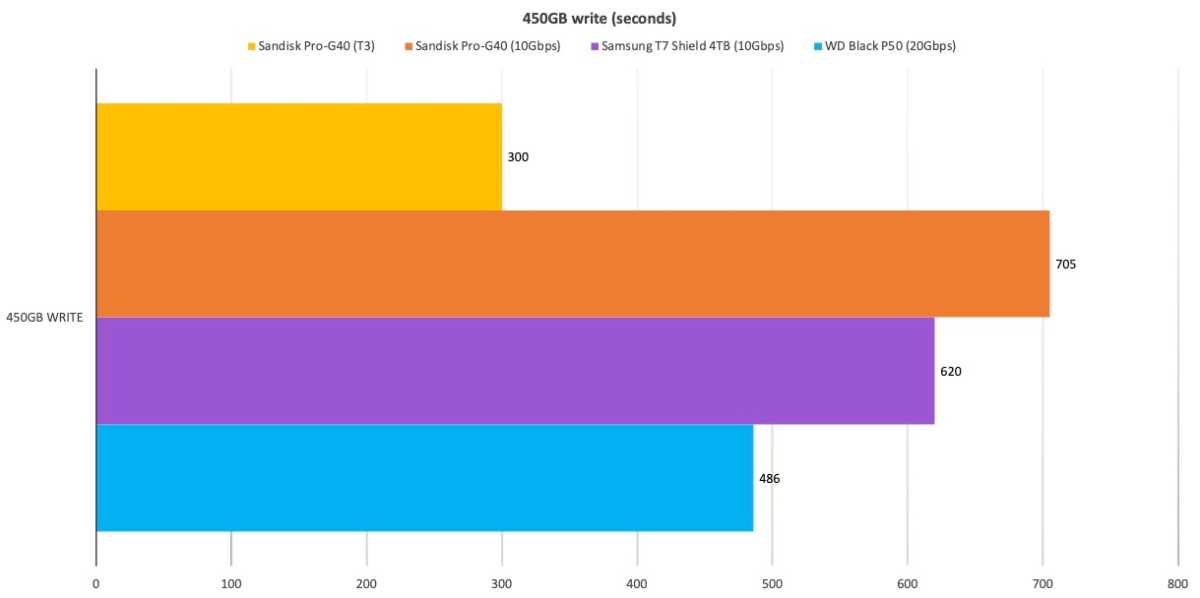
SanDisk Pro-G40 was fast over Thunderbolt, but rather slow via USB when writing our single large 450GB file. Shorter bars are better.
Jon L. Jacobi
While the Pro-G40 over Thunderbolt was fast at the 450GB write, the drive was considerably slower than the T7 Shield via 10Gbps USB. Not by a ton, but noticeably so.
Note that while the Pro-G40 ships formatted to APFS, we reformatted to NTFS for testing. ExFAT would allow you to switch between macOS and Windows/Linux machines with impunity.
Overall, the Pro-G40 is a very good performer, and as noted, gives you top speed when you need it and daintier power consumption and less heat when USB will do.
Should you buy the SanDisk Pro-G40?
Thunderbolt drives are never cheap, but they’re absolutely worth it if performance is paramount. In fact, it’s hard to tell them apart from internal storage when in use. USB, on the other hand is fast enough for most folks and uses significantly less power.
That’s a rather roundabout way of saying: If you need the speed, go for it—the Pro-G40 is as good as we’ve seen for a dual-bus drive. But given the price, if 10Gbps will suffice, go for a less expensive drive such as the Samsung T7.
How we test
External drive tests currently utilize Windows 11 64-bit running on an X790 (PCIe 4.0/5.0) motherboard/i5-12400 CPU combo with two Kingston Fury 32GB DDR5 4800MHz modules (64GB of memory total). Both 20Gbps USB and Thunderbolt 4 are on the board and Intel integrated graphics are employed. The 48GB transfer tests utilize an ImDisk RAM disk taking up 58GB of the 64GB of total memory. The 45
Autentifică-te pentru a adăuga comentarii
Alte posturi din acest grup

If you’ve been looking for a good 2-in-1 laptop with a touchscreen bu

Beginning on June 30 of this year, residents in Wyoming are going to



If you’ve been using Windows for a long time, you’ve probably been to


Adding a search field to your spreadsheet can greatly improve data na

